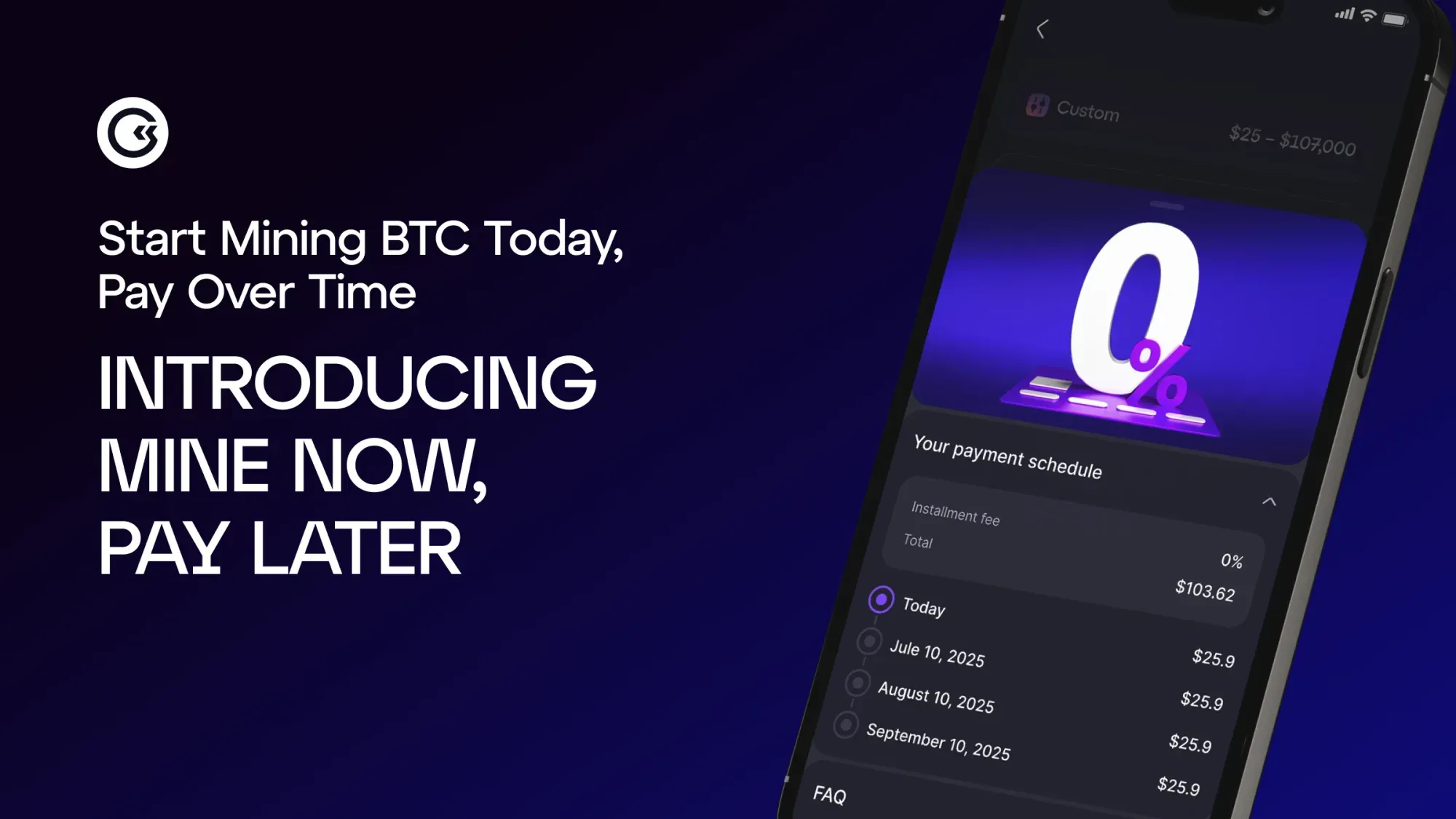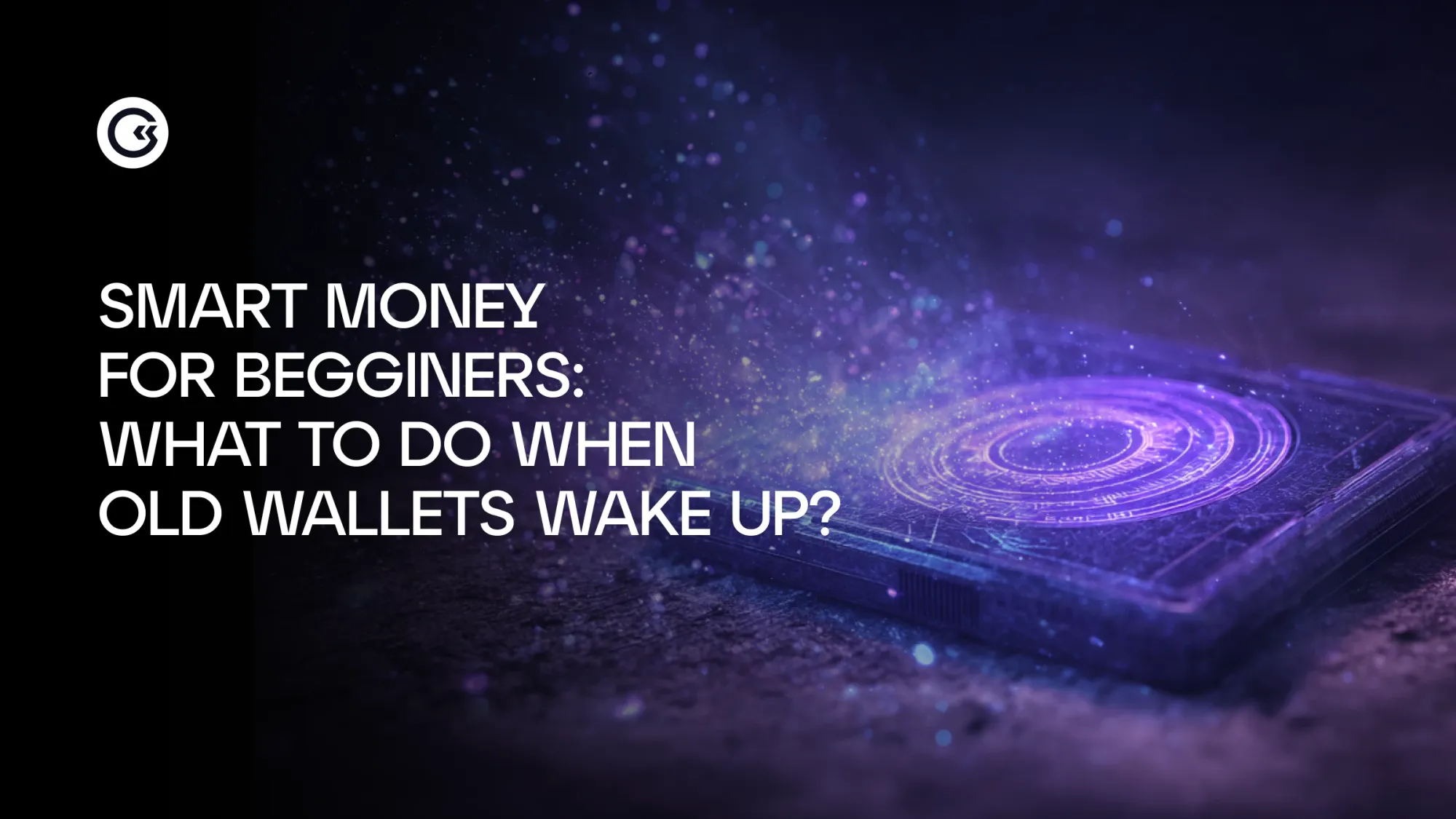🔒 Nota: Esta guía se enfoca específicamente en billeteras no custodiales, es decir, billeteras donde solo tú eres responsable de gestionar y proteger tus claves privadas. ¿Por qué? Porque son una herramienta fundamental para cualquier persona nueva en las criptomonedas, abren el acceso a toda la gama de servicios Web3 y aplicaciones descentralizadas, y las billeteras no custodiales son frecuentemente requeridas para plataformas como GoMining. Si eres nuevo en este espacio, entender cómo usar una billetera no custodial es uno de los mejores primeros pasos que puedes dar.
Introducción
Si te preguntas cómo crear una billetera cripto o cómo crear una cuenta de bitcoin, has llegado al lugar correcto. Una billetera de criptomonedas es una herramienta digital esencial que te permite almacenar, enviar y recibir de forma segura varios activos digitales como Bitcoin, Ethereum y muchas otras criptomonedas. A diferencia del dinero tradicional almacenado en bancos, las criptomonedas existen puramente en forma digital en redes descentralizadas llamadas blockchains. Tu billetera no almacena realmente las monedas en sí, sino que gestiona las claves privadas — códigos criptográficos únicos — que demuestran que posees esas monedas en la blockchain.
Estas claves privadas son las que te permiten acceder y controlar tus activos cripto. Si alguien más obtiene tus claves privadas, gana acceso completo a tus fondos, por lo que la seguridad de la billetera es absolutamente crítica. Perder tus claves privadas o frase de recuperación típicamente significa perder el acceso a tus criptomonedas permanentemente, así que elegir la billetera correcta y protegerla es una de las decisiones más importantes que tomarás como usuario de cripto.
Existen varios tipos de billeteras de criptomonedas adaptadas a diferentes necesidades y niveles de experiencia:
Billeteras de Software: Estas son aplicaciones o programas instalados en tu computadora o dispositivo móvil. Proporcionan fácil acceso y conveniencia para transacciones cotidianas, pero están conectadas a internet, lo que puede hacerlas más vulnerables a hackeos.
Billeteras de Hardware: Estos son dispositivos físicos que almacenan tus claves privadas sin conexión, ofreciendo un nivel más alto de seguridad contra amenazas cibernéticas. Las billeteras de hardware son ideales para poseedores a largo plazo o aquellos que gestionan cantidades significativas de criptomonedas.
Cada tipo tiene sus ventajas y desventajas, y tu elección depende de cómo planees usar tu cripto — ya sea para trading frecuente, posesión a largo plazo, o máxima seguridad.
En esta guía completa, te llevaremos a través de cada paso importante para obtener una billetera cripto que se adapte a tus necesidades, desde seleccionar el mejor tipo y descargar o comprar tu billetera, hasta configurarla, respaldarla de forma segura, y finalmente financiarla. Al final, estarás listo para gestionar y proteger con confianza tus activos digitales en el emocionante mundo de las criptomonedas.
Paso 1: Elegir el Tipo de Billetera

El primer paso en cómo crear una billetera cripto es seleccionar el tipo correcto de billetera que se adapte a tus necesidades. Si te preguntas "¿cómo obtengo una billetera cripto?", o buscas obtener una billetera cripto por primera vez, entender las diferencias entre los tipos de billeteras es crucial para gestionar tus activos digitales de forma segura.
Las billeteras de software son aplicaciones populares o plataformas basadas en web que puedes descargar en tu escritorio o dispositivo móvil. Ejemplos como Exodus, Electrum y Trust Wallet son algunas de las mejores opciones disponibles. Estas billeteras de software hacen que crear una billetera cripto sea fácil y accesible, perfecto para principiantes que quieren acceso rápido a su criptomoneda para comprar, vender o comerciar regularmente. Debido a que se conectan a internet, estas billeteras ofrecen conveniencia pero requieren buenas prácticas de seguridad para mantener tus fondos seguros.
Para aquellos que quieren un nivel más alto de seguridad, las billeteras de hardware como Ledger y Trezor son dispositivos físicos que almacenan tus claves privadas sin conexión. Este método es una excelente manera de crear protección de billetera blockchain porque tus claves nunca tocan la web, haciendo extremadamente difícil que los hackers alcancen tus fondos. Las billeteras de hardware cuestan más que las aplicaciones de software pero valen la pena por la seguridad a largo plazo. Si eres serio sobre proteger tus inversiones en criptomonedas, esta es la manera de hacer una billetera cripto que priorice la seguridad.
Las billeteras de papel implican generar tus claves privadas sin conexión e imprimirlas, proporcionando una opción ultra-segura y aislada para almacenamiento en frío. Aunque esta es una opción válida para usuarios avanzados, las billeteras de papel no se recomiendan para principiantes debido a riesgos de daño físico o pérdida. Requieren almacenamiento y manejo cuidadoso para evitar perder el acceso a tus fondos.
Al crear una billetera cripto, piensa en qué tan seguido planeas usar la billetera, el dispositivo desde el que la accederás, y cuánta seguridad necesitas. Ya sea que quieras saber cómo hacer una billetera cripto rápidamente a través de una aplicación o tomar precauciones extra con un dispositivo de hardware, elegir la billetera correcta es un primer paso crítico en tu viaje de criptomonedas.
Paso 2: Descargar o Comprar la Billetera

Una vez que hayas decidido el tipo de billetera que se adapta a tus necesidades, el siguiente paso importante en cómo crear una billetera cripto es descargar o comprar tu billetera de forma segura.
Si optas por una billetera de software, tu mejor opción es visitar el sitio web oficial del proveedor de la billetera o tiendas de aplicaciones confiables como Google Play o la Apple App Store para descargar la aplicación de billetera en tu escritorio o dispositivo móvil. Los ejemplos incluyen aplicaciones bien conocidas como Exodus, Electrum o Trust Wallet. Es crucial siempre verificar que estás descargando la billetera de una fuente oficial y segura - esto te ayuda a evitar estafas o aplicaciones falsas que podrían robar tus activos digitales. Una vez descargada, puedes comenzar a usar la billetera para comprar, vender y gestionar tus criptomonedas.
Para aquellos que quieren hacer una billetera cripto con el nivel más alto de seguridad, comprar una billetera de hardware es el camino a seguir. Fabricantes confiables como Ledger y Trezor venden sus dispositivos a través de sitios web oficiales y vendedores autorizados. Evita vendedores terceros o mercados donde podrían aparecer dispositivos falsificados o alterados. Después de la compra, sigue cuidadosamente las instrucciones de configuración que vienen con el dispositivo. Esto usualmente incluye inicializar el dispositivo, crear tu frase de recuperación y conectarlo a tu computadora o aplicación móvil. Las billeteras de hardware mantienen tus claves privadas sin conexión, proporcionando fuerte protección contra hackeos y acceso no autorizado.
Si estás interesado en crear una billetera cripto usando una billetera de papel, este método implica usar un generador confiable sin conexión para producir las claves públicas y privadas de tu billetera. Después de generar, necesitarás imprimir las claves en papel y almacenarlas en un lugar seguro y seco. Las billeteras de papel son altamente seguras contra amenazas en línea pero requieren protección física, así que asegúrate de mantener tu billetera de papel lejos de la humedad, fuego o pérdida.
Este paso responde una pregunta común que muchos principiantes tienen: ¿cómo obtengo una billetera cripto? El proceso es simple — selecciona el tipo correcto de billetera, descárgala o cómprala de forma segura, y estarás listo para pasar a configurar y financiar tu nueva billetera cripto.
Paso 3: Crear un Respaldo Seguro

Uno de los pasos más cruciales al crear una billetera cripto es crear un respaldo seguro de la información de recuperación de tu billetera. Casi toda billetera - ya sea que estés usando una aplicación de software o un dispositivo de hardware - generará una frase de recuperación, también llamada frase semilla. Esta frase usualmente consiste en 12 a 24 palabras aleatorias que actúan como la clave maestra de tu billetera.
La frase de recuperación es esencial porque te permite restaurar tu billetera y acceder a tus activos digitales si pierdes tu dispositivo, desinstalas la aplicación u olvidas tu contraseña. Sin esta frase, arriesgas perder permanentemente el acceso a tu criptomoneda.
Cuando obtengas tu frase de recuperación, escríbela cuidadosamente en papel o almacénala sin conexión en un lugar seguro como una caja fuerte o un cajón con llave. Evita guardar tu frase semilla en cualquier dispositivo digital — como teléfonos, computadoras o servicios en la nube — ya que esto puede exponerla a hackers o malware. Asimismo, nunca compartas tu frase de recuperación con nadie o la ingreses en sitios web o aplicaciones no confiables.
Recuerda, perder tu respaldo significa perder el acceso a tu billetera y cualquier cripto que tengas dentro — no hay manera de recuperar fondos sin él. Al tomar este paso en serio y mantener tu frase de recuperación privada y segura, estás protegiendo tu inversión y dándote tranquilidad mientras comienzas tu viaje cripto.
Este consejo es esencial para cualquiera que se pregunte cómo crear una cuenta de bitcoin u obtener una billetera cripto y quiera mantener sus activos seguros a largo plazo.
Paso 4: Configurar Tu Billetera

Después de que hayas descargado tu aplicación de billetera de software o recibido tu dispositivo de hardware, el siguiente paso es configurar tu billetera adecuadamente. Este paso es esencial para asegurar tu criptomoneda y asegurarte de que puedas acceder y gestionar tus activos con facilidad.
Comienza creando tu cuenta de billetera siguiendo las indicaciones de configuración. Esto usualmente implica elegir una contraseña fuerte y única para proteger tu billetera en tu dispositivo. Usar una contraseña robusta es una parte fundamental de cómo crear una billetera cripto de forma segura, ayudando a mantener a usuarios no autorizados fuera.
A continuación, si tu billetera lo soporta, habilita la autenticación de dos factores (2FA). Esto añade una capa extra de protección al requerir un segundo paso de verificación como un código enviado a tu teléfono — cada vez que inicies sesión o apruebes transacciones. Usar 2FA es una mejor práctica para asegurar tu billetera contra intentos de hackeo.
Tómate tiempo para explorar la interfaz de la billetera. Aprende cómo enviar y recibir criptomonedas, verificar tu saldo y revisar tu historial de transacciones. Ya sea que estés usando una aplicación móvil, software de escritorio o una billetera basada en web, entender estas funciones principales te ayudará a usar confiadamente tu billetera para comprar, vender o transferir tus activos digitales sin errores.
Al familiarizarte con las características de tu billetera, te estás preparando para una experiencia cripto más fluida y segura — ya sea que seas un principiante pensando para ti mismo "¿cómo obtengo una billetera cripto?" o un usuario a largo plazo gestionando múltiples billeteras.
Paso 5: Financiar Tu Billetera

Una vez que tu billetera esté completamente configurada, el siguiente paso importante es financiar tu billetera depositando criptomoneda en ella. Aquí es donde tu billetera empieza a cobrar vida como una herramienta para almacenar y gestionar tus activos digitales de forma segura.
Para hacer esto, puedes comprar criptomoneda desde intercambios o plataformas, luego transferir esos activos a la dirección pública única de tu billetera. Esta dirección actúa como tu número de cuenta digital — seguro de compartir con otros que quieren enviarte cripto. Ya sea que estés enviando Bitcoin, Ethereum u otras monedas, siempre verifica dos veces la dirección antes de confirmar cualquier transacción.
Si estás recibiendo cripto de alguien más, simplemente dales la dirección pública de tu billetera. Recuerda, tus claves privadas y frase de recuperación son tus códigos secretos que prueban la propiedad de tu billetera y activos — nunca las compartas con nadie para mantener tus fondos seguros.
Entender la diferencia entre enviar y recibir transacciones cripto es crucial cuando aprendes cómo crear una billetera cripto y cómo hacer una billetera cripto que funcione efectivamente para ti. Enviar implica transferir activos desde tu billetera a otra dirección, mientras que recibir significa aceptar fondos de alguien más en tu billetera.
Al dominar estos conceptos básicos, estarás listo para usar confiadamente tu billetera para comerciar, invertir o simplemente mantener tus criptomonedas como parte de tu cartera de activos digitales.
Gana Bitcoin Sin Esfuerzo con GoMining 🚀
¿Listo para llevar tu viaje cripto al siguiente nivel? Con la plataforma GoMining, no solo almacenas tus activos digitales — ¡puedes ganar Bitcoin activamente todos los días! GoMining ofrece mineros digitales innovadores que representan poder de hash real, permitiéndote generar recompensas consistentes de Bitcoin sin las complicaciones de la minería tradicional.
- No se necesita hardware costoso — mina Bitcoin digitalmente
- Pagos diarios transparentes directamente a tu billetera
- Planes flexibles para adaptarse tanto a principiantes como a usuarios experimentados
- Aplicación fácil de usar para gestionar tus mineros en cualquier momento y lugar
¡Comienza ahora y haz que tu billetera cripto trabaje para ti! Descubre cómo crear una billetera cripto y vincularla a GoMining para comenzar a ganar Bitcoin con solo unos pocos clics.
Aprende Más y Regístrate en GoMining
Conclusión
Aprender cómo crear una billetera cripto es el primer paso esencial hacia gestionar y proteger de forma segura tus activos de criptomoneda. Ya sea que estés empezando o buscando crear una billetera blockchain por primera vez, seleccionar el tipo correcto de billetera que se adapte a tus necesidades únicas es crucial. Tómate el tiempo para configurar tu billetera cuidadosamente, prestando atención especial a cada paso de seguridad — especialmente cuando se trata de salvaguardar tu frase de recuperación. Siempre almacena este respaldo crítico sin conexión y mantenlo completamente privado para prevenir acceso no autorizado.
La seguridad general de tus activos digitales depende en gran medida de qué tan bien protejas tu billetera. Asegúrate de usar contraseñas fuertes y únicas, habilitar la autenticación de dos factores (2FA) donde sea posible, y mantenerte alerta a posibles estafas o intentos de phishing que podrían comprometer tu cuenta. Mantener estas mejores prácticas en mente te ayudará a minimizar riesgos mientras obtienes una billetera cripto y comienzas a usarla con confianza.
Con el conocimiento correcto, las herramientas y la vigilancia continua, puedes navegar el mundo dinámico de las criptomonedas con confianza y aprovechar al máximo tus inversiones digitales. Ya sea que planees comprar, vender o mantener tus activos cripto, dominar los conceptos básicos de la creación y gestión de billeteras es la base de tu éxito en este emocionante nuevo panorama financiero.
Traducción realizada con ayuda de IA. Puede leer el artículo original aquí
July 30, 2025












